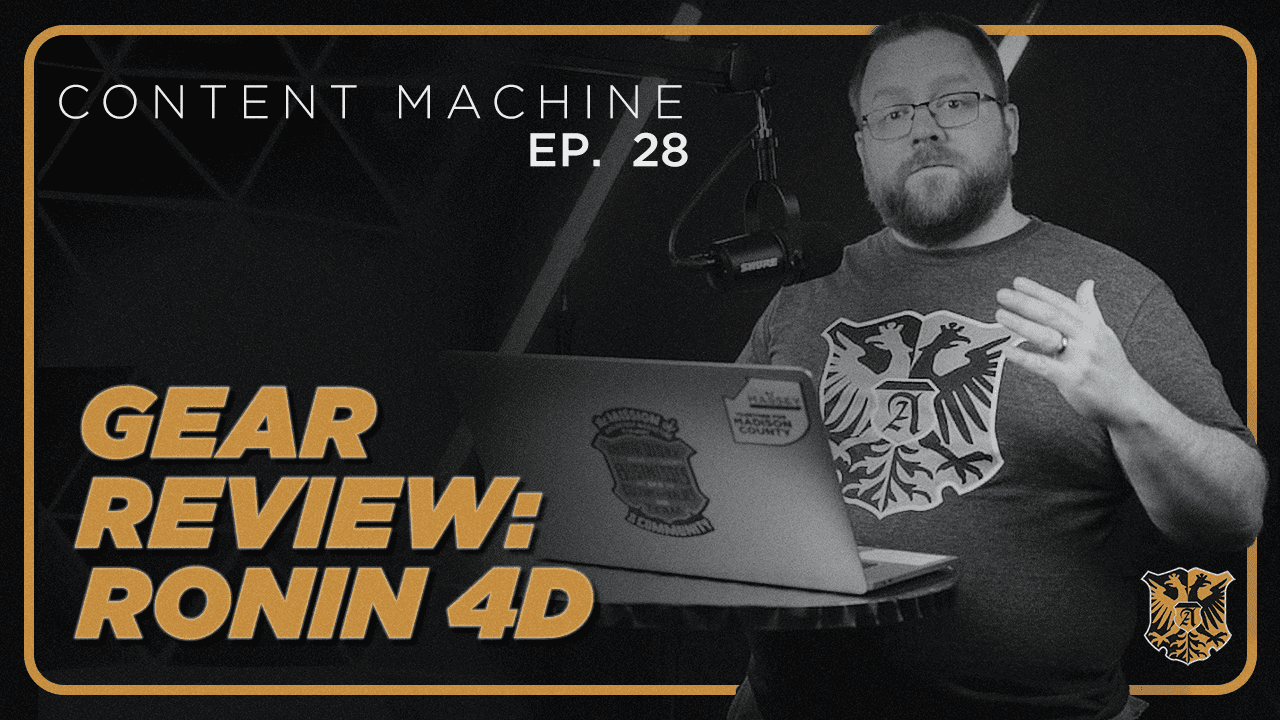
One of the difficult things about being in the video production industry is the need to buy new gear on the regular. This week on the Content Machine podcast, we’re talking about a game changing piece of equipment that you can add to your video toolkit.
Video gear is constantly evolving to better fill production needs, which means gear is either becoming higher quality or becoming more affordable for higher end gear. This is actually the reason we were able to break into the video space eight years ago. We happened to start at the magic moment when recording gear became really affordable for the first time. Gear cost was no longer a barrier to entry that it had always been. So, because gear is more affordable than ever, there is more competition than ever, and because there’s more competition than ever, the space is forever changing. We are always looking for an edge against our competitors. Bar none, the biggest edge that Adelsberger Marketing has is its videographers and editors. We have talented people that create amazing videos. It’s the creativity of the scripting, shooting, and editing that set apart any project. But with that being said, creatives need their tools, so we always stay on the lookout for new tools to bring into our inventory to allow our team to have more options for their creativity.
Fun fact, we even have a dedicated Slack channel so we can communicate and stay on top of all the new trendy tech. The day the Ronin 4D was released, we put in our order. We had no doubts it was going to be a game changer, and change the game it certainly has. The Ronin 4D is a best-in-class camera with every bell and whistle you can imagine on it. And we wanted to wait a while before we put out a review about it so that we could put it through its paces first. But this thing is the real deal. The quality of the video is top notch. Not just that it can record 6K or 8K, but the image coming from the sensor is crisp. With all the recording formats DJI has available, color grading is very flexible. But the capabilities of this camera are really what we’re here for. The three main capabilities to highlight today, stability, focus, and teamwork. While all three of these capabilities are not new to the camera industry, the Ronin 4D is unique because it has all the capabilities packaged together straight out of the box.
So, stability. Prior to this camera, we would need to take an extra time to set up our cameras on stabilizers and make sure the gimbals were balanced and ready. Also, we always had to make sure those stabilizers stay charged as well. The Ronin, having a built-in stabilizer, saves time and potential error and adds some additional upgrades to the stabilizing system. With the ground radar that is built in, it adds an extra dimension to our ability to stabilize a camera. The radar means I can run nearly at a full sprint and you can’t tell the camera is being carried by a human. It is wild how good this stabilization is. That also means we do not need to take time in post to stabilize or crop any of our footage in to hide stabilization issues.
The Ronin has an amazing autofocus and focus pulling system built into the camera. No more searching for a specific lens with focusing gears and having to have a second person waiting by to rack focus. On the fly, you can spin a dedicated wheel located right in the Ronin’s handle to change the focus point. Additionally, its facial recognition is ridiculously fast. In our testing and usage, its ability to focus is nearly instantaneous and very, very accurate, thanks to the camera literally using radar to read the scene.
Finally, teamwork. A native component of the Ronin 4D is the monitoring system and the secondary controls. This setup allows someone to support the camera operator with focus, exposure, and gamble controls. Sometimes with and talk shots, you need to be focused on not tripping or just keeping the subject in frame. This team method allows our operator to focus solely on safety while a second person can make the shot look perfect. The transmission speed and quality on the wireless monitor is crazy and it looks as good as it does on the camera. It can also serve as a great way for a client to watch along with us if they are concerned about certain shots.
Now, one thing I was concerned about is the battery life. We are using proprietary batteries and the inclusion of a built-in gamble. I wasn’t sure how the battery was going to hold up over the usage of the device. It has not been an issue. We get great battery life from the camera and with just a few extra swap outs, we have not had any issues.
The Ronin 4D has been an excellent addition to our toolset, and I would recommend it for any videographer looking to improve their stability, focus, and teamwork, and most importantly, anyone who’s looking to take up their production capabilities.
Thanks for listening to this episode of the Content Machine Podcast. We don’t normally do gear reviews here, so if you like this episode and you want more reviews like this one, drop us a comment and please let us know.





